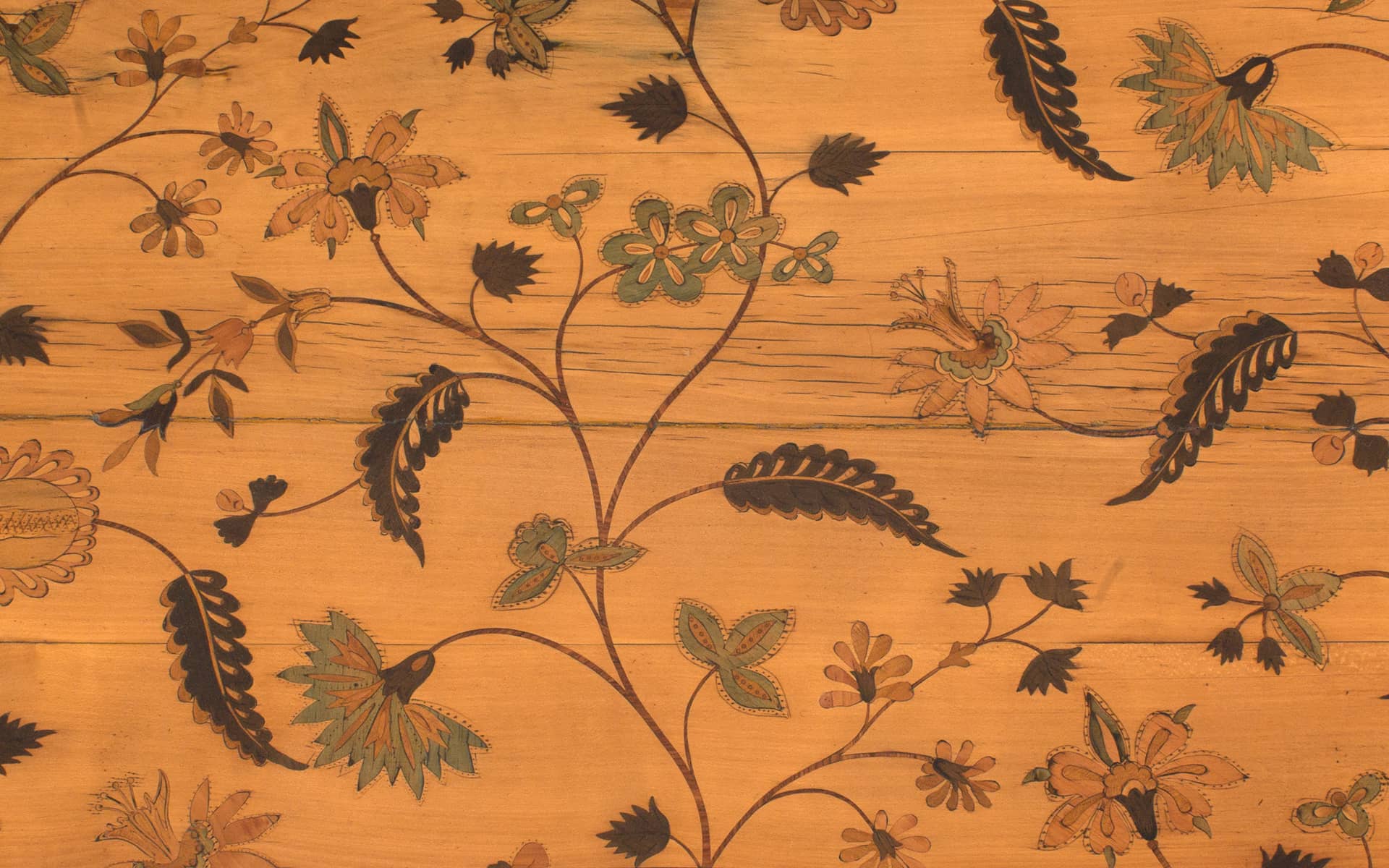
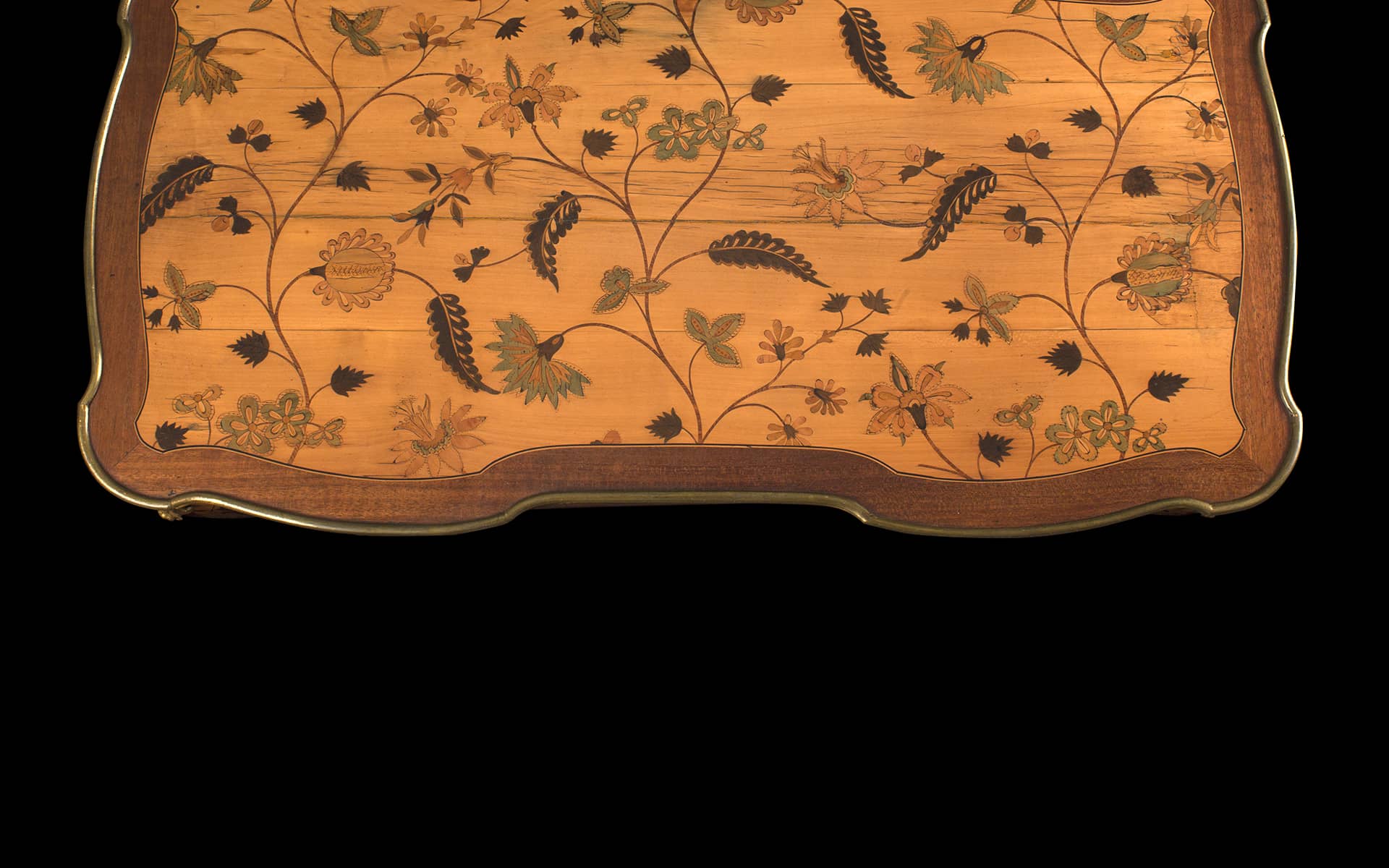
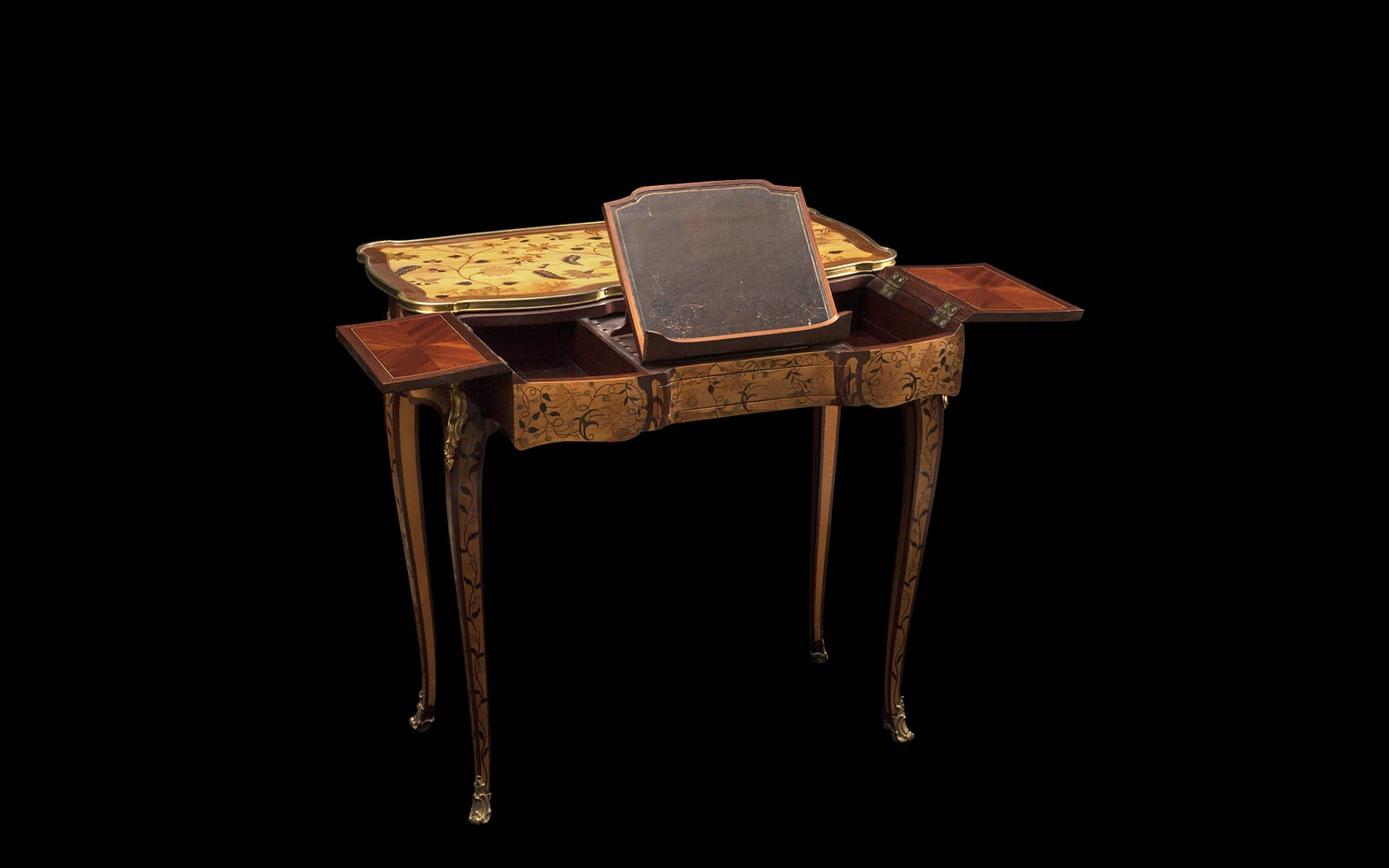
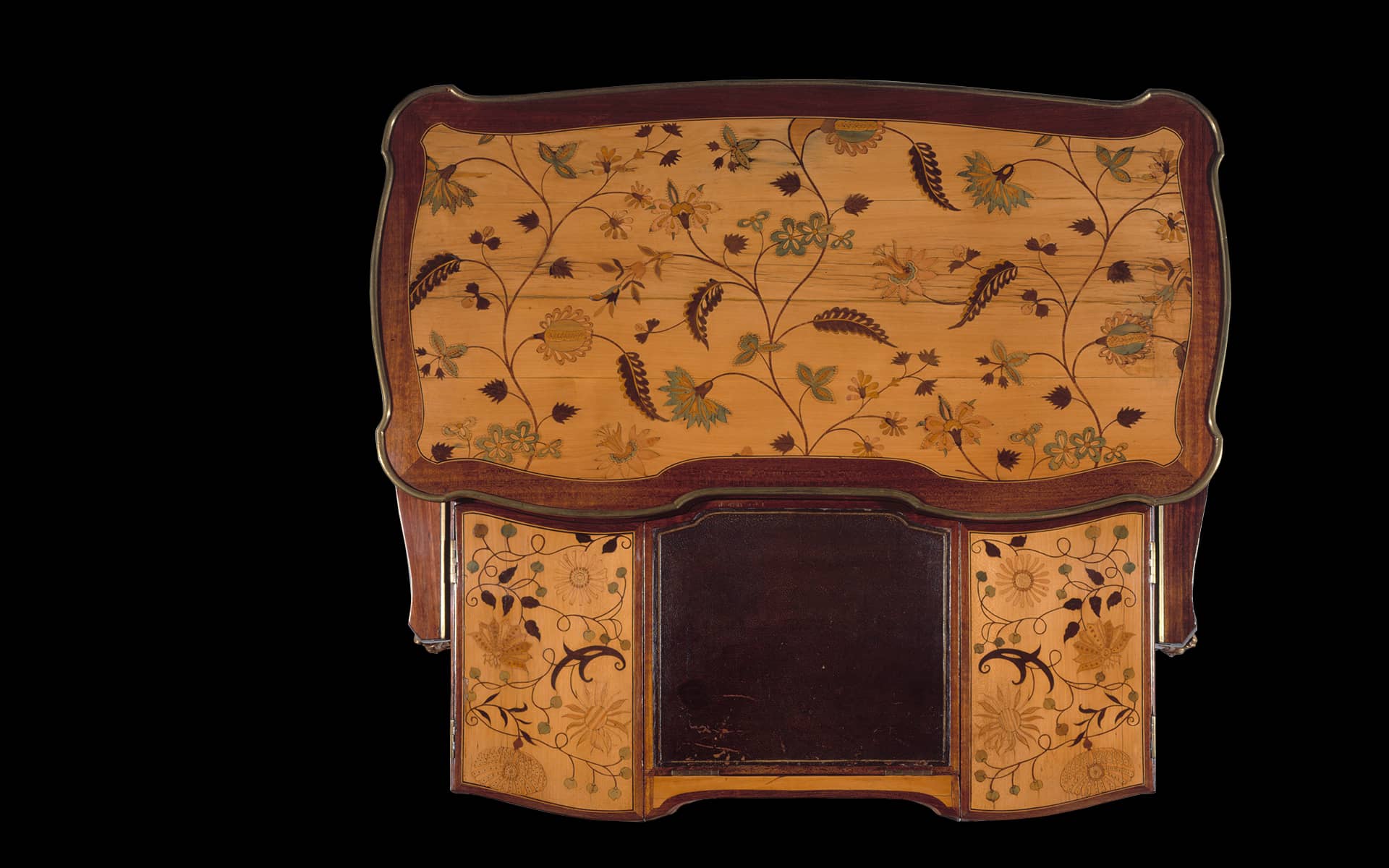
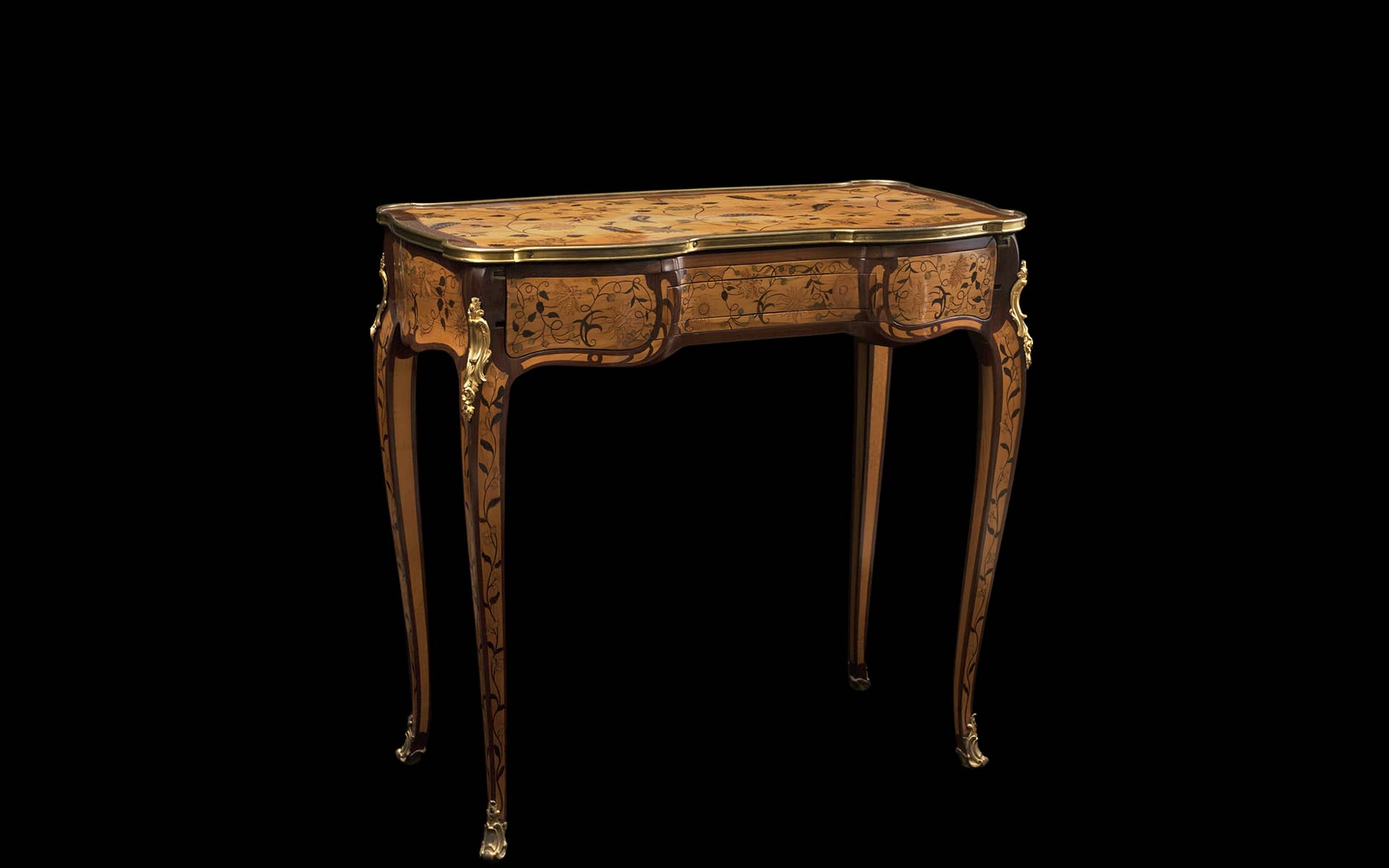
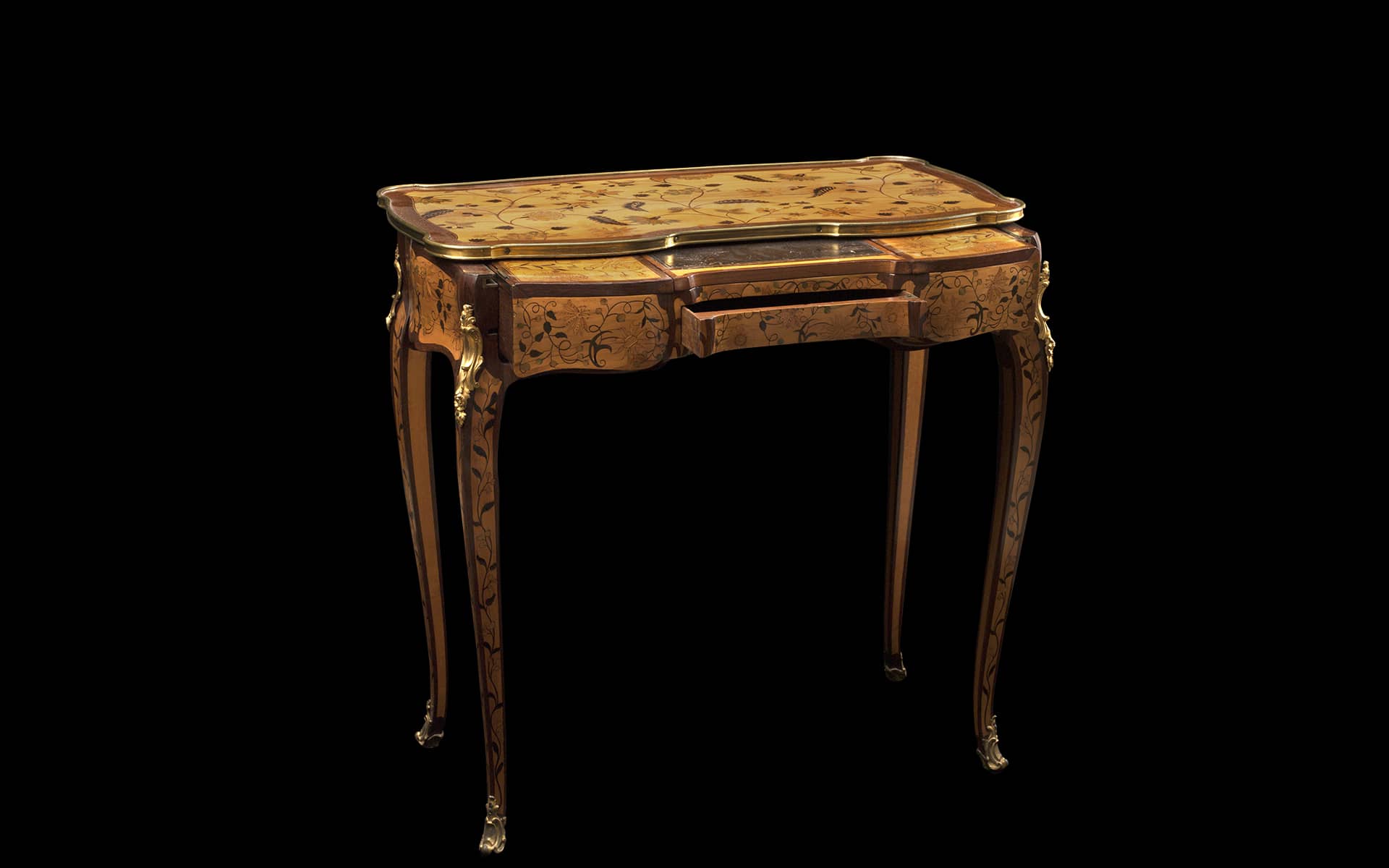
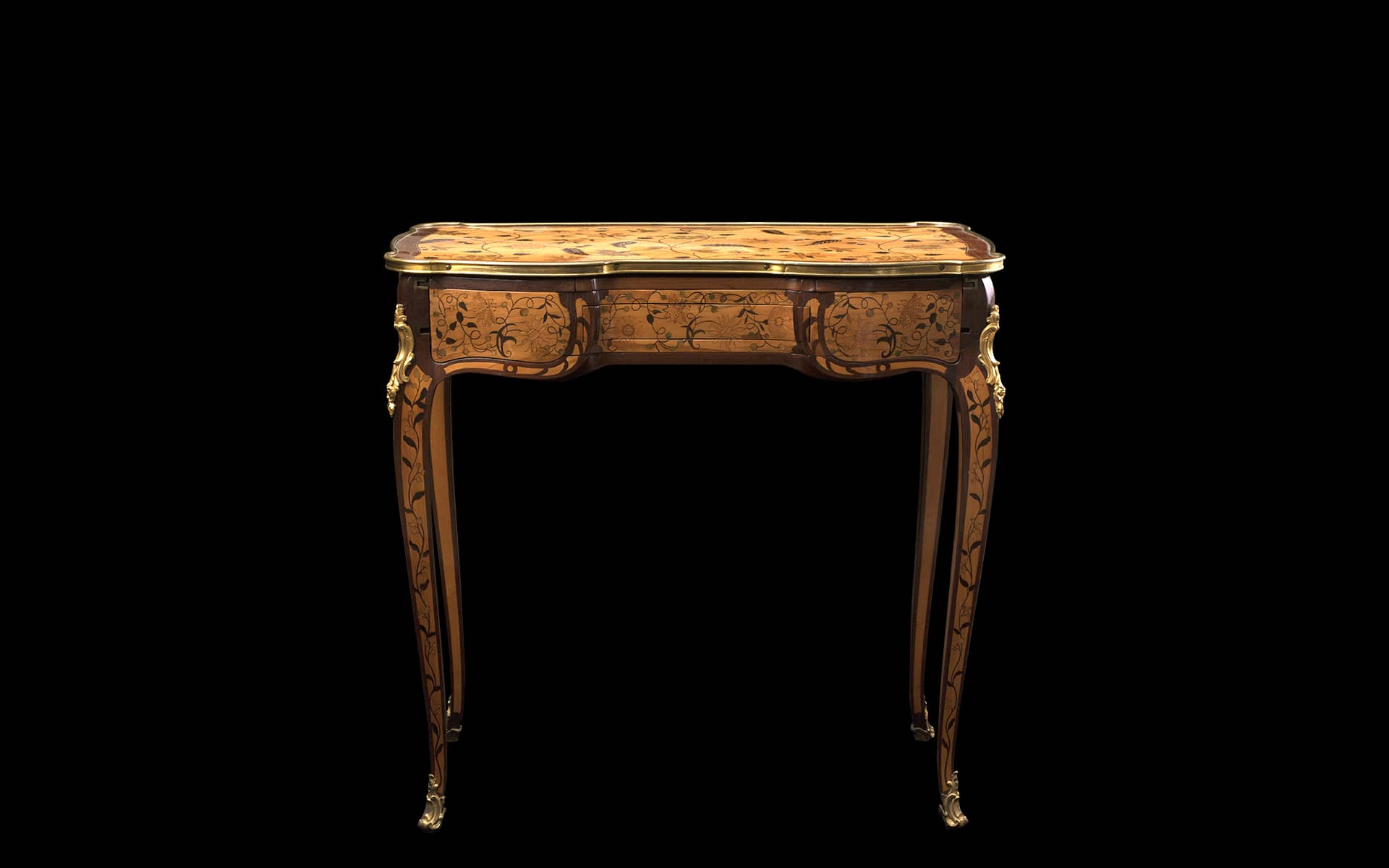
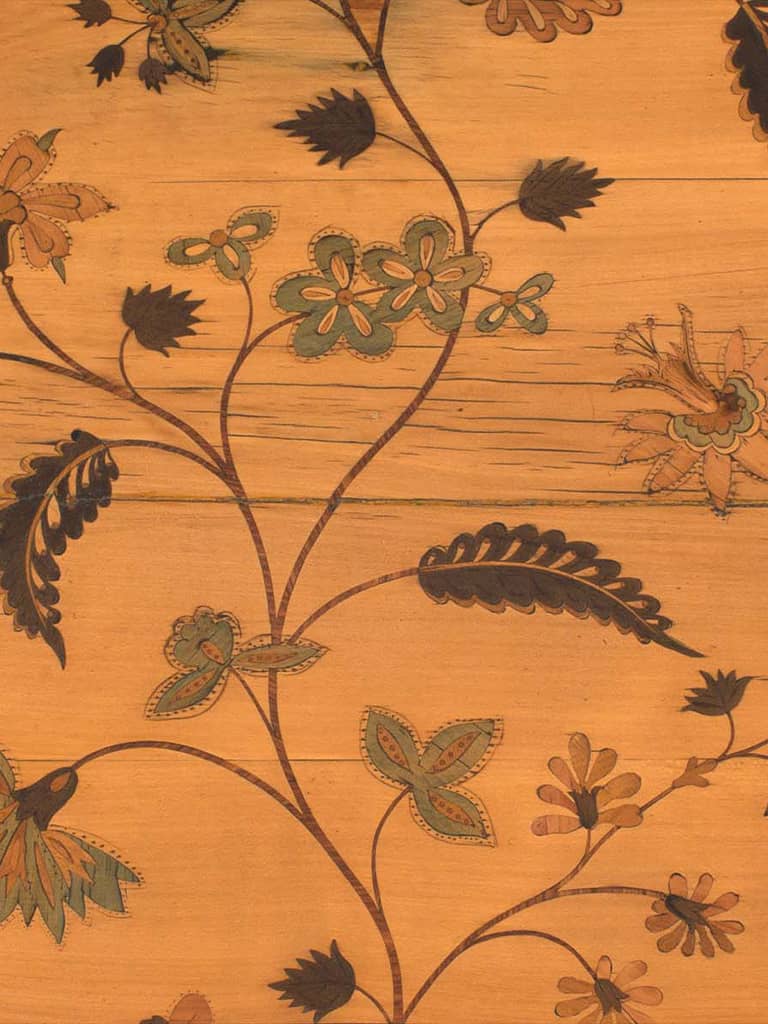
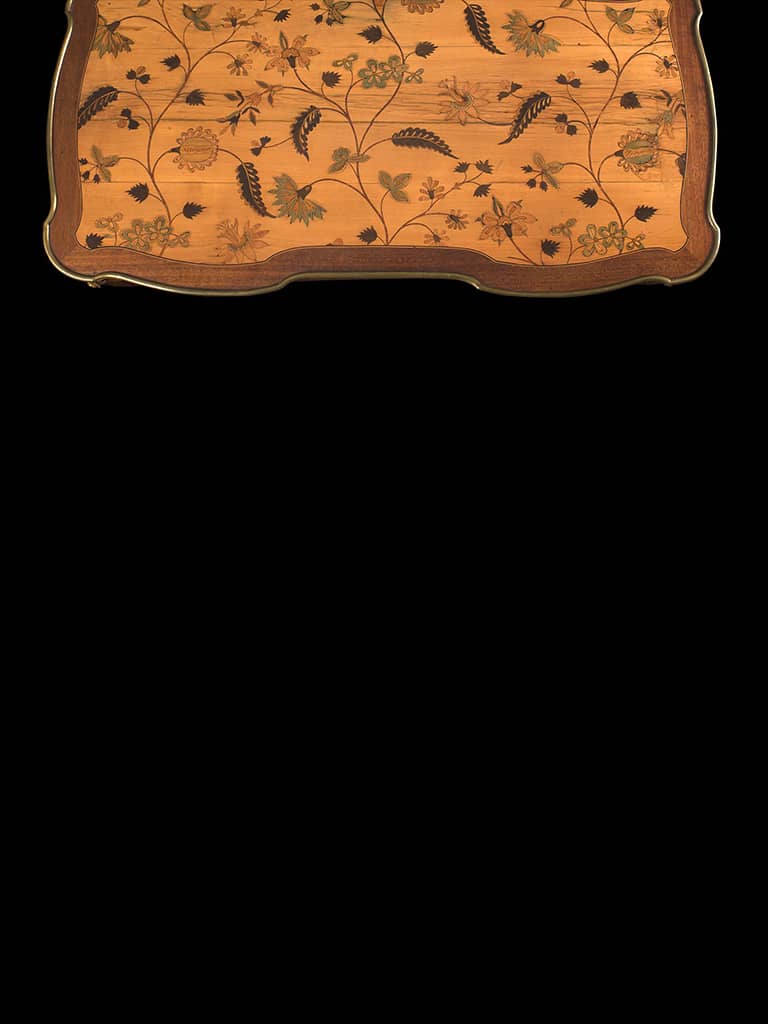
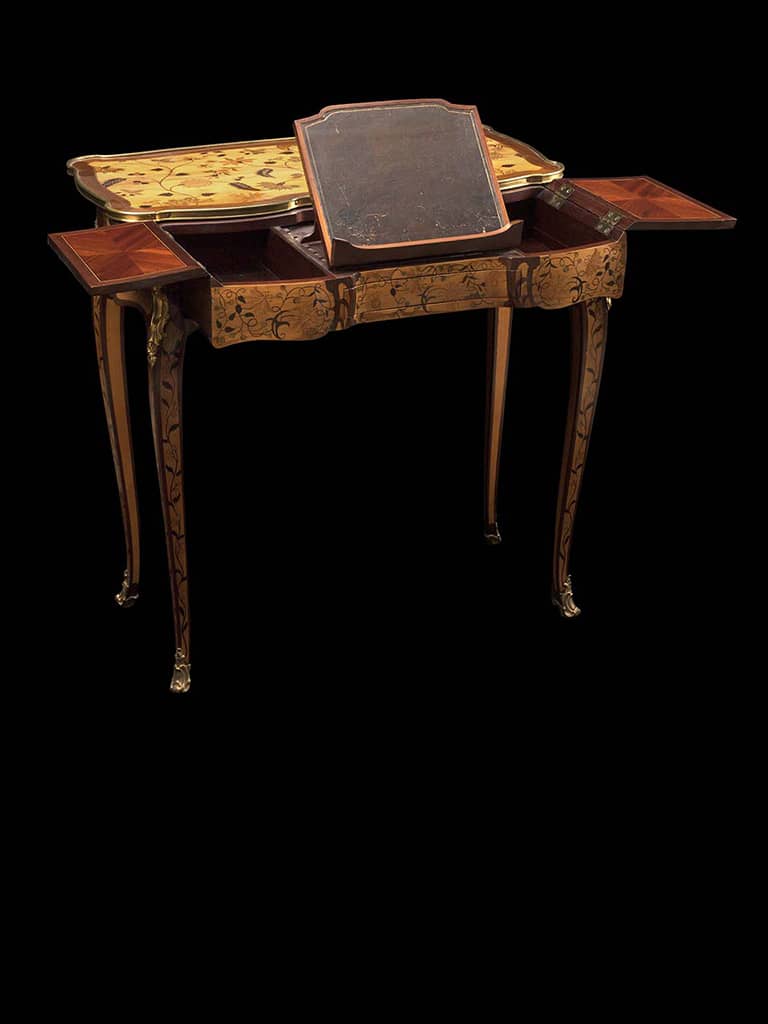
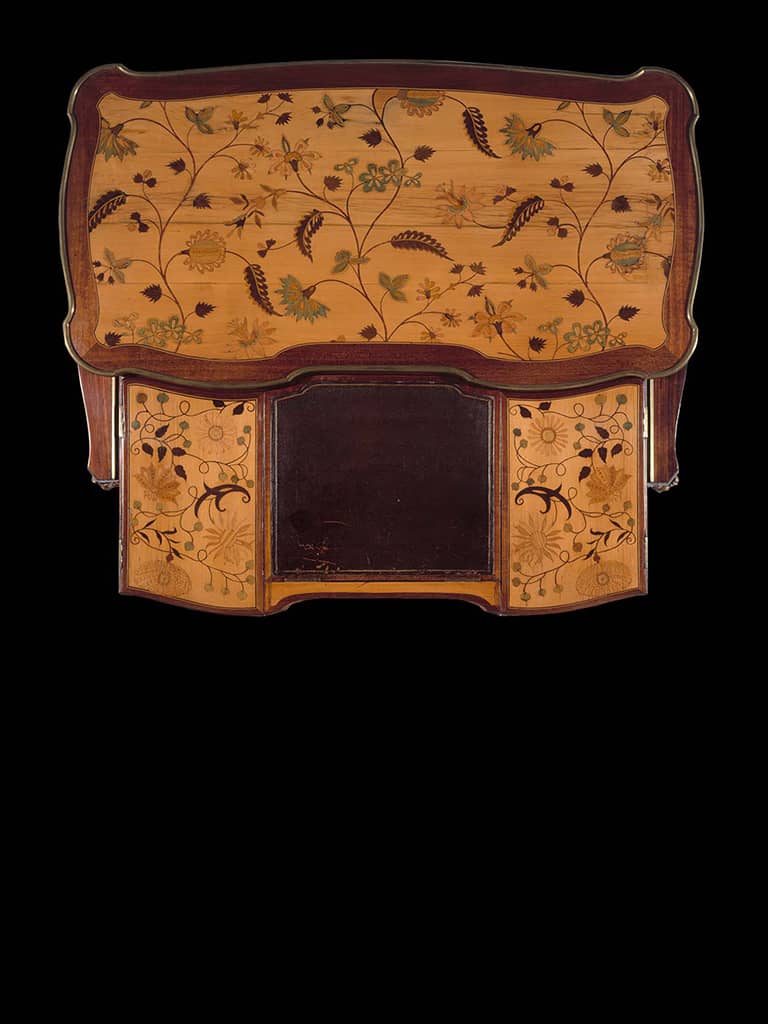
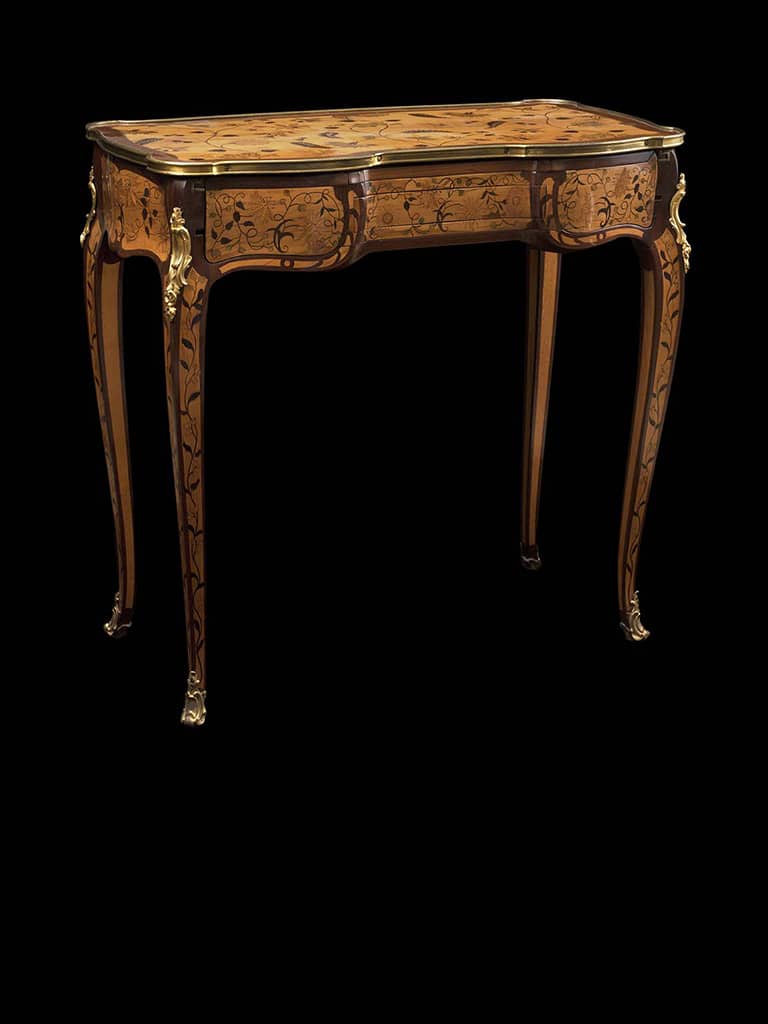
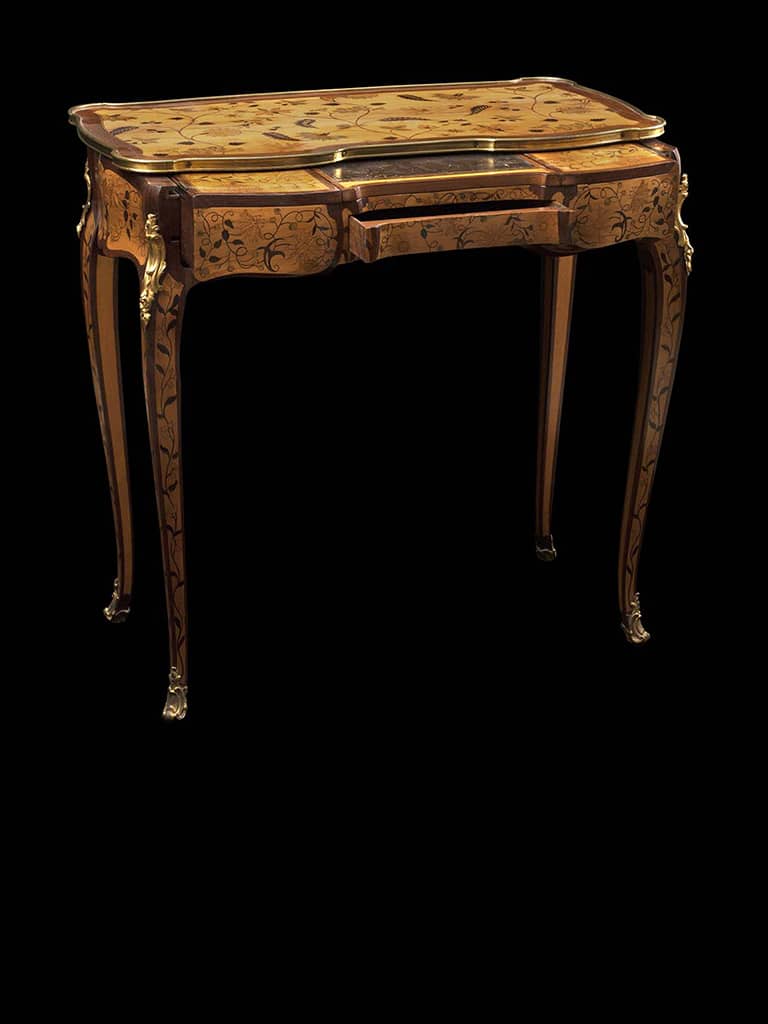
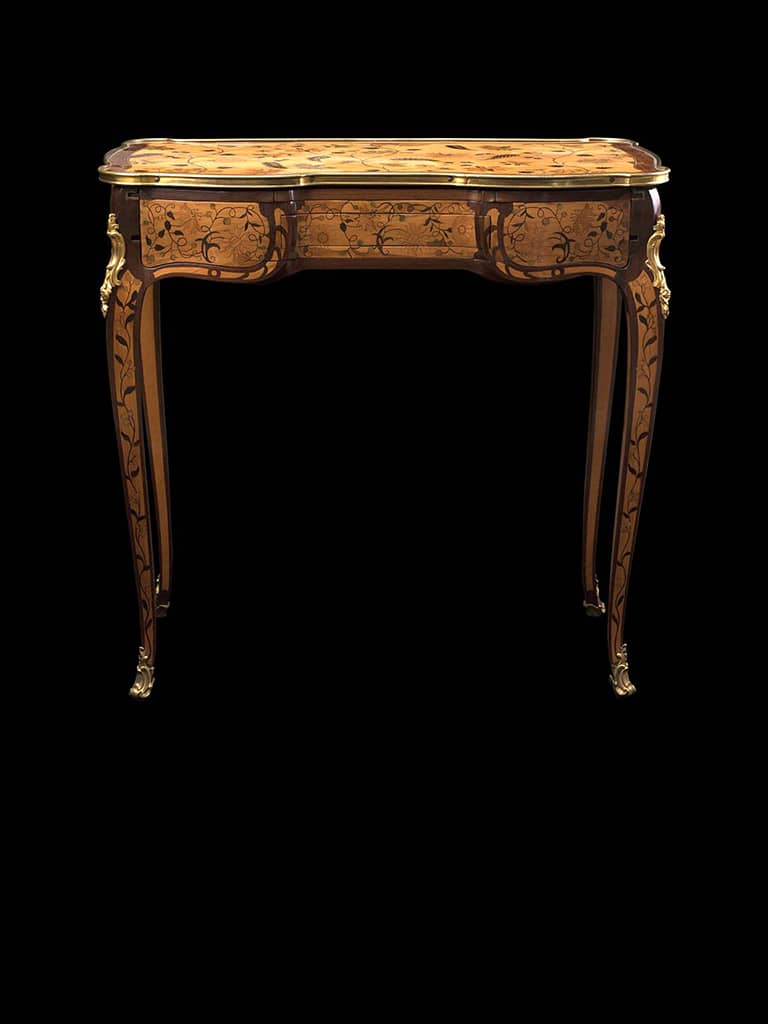
Hidden secrets
The floral motifs in polychrome wood marquetry evoke the indiennes, printed cotton imported to Europe by the East India Company. These decorative ornaments had many uses, from fashion to furnishings. An incitement to exoticism, they were very popular during the 18th century.
Under the sliding tray, a cleverly concealed mechanism is hidden. A single turn of the lock unlocks secret drawers and a leather-trimmed writing table whose adjustable angle makes writing or reading more comfortable.
The Flemish cabinetmaker, Jean-François Œben, created models of so-called mechanical or "two-purpose" tables. This convertible piece can be used as both an occasional table and a desk.
With a light composition and of medium size, Œben's table is a meuble volant. Easy to move around, it could be found in opulent, bourgeois interiors.
When the table has unveiled all its secrets, it reveals compartments for writing implements (paper, ink, sand and quills) and a desk.
The curved feet, tray and drawers are characteristic of the end of the reign of Louis XV (1710-1774). Elegant gilded bronzes adorn the legs and circumference of the table. This piece of furniture is precious on account of both its contents and how they are contained.